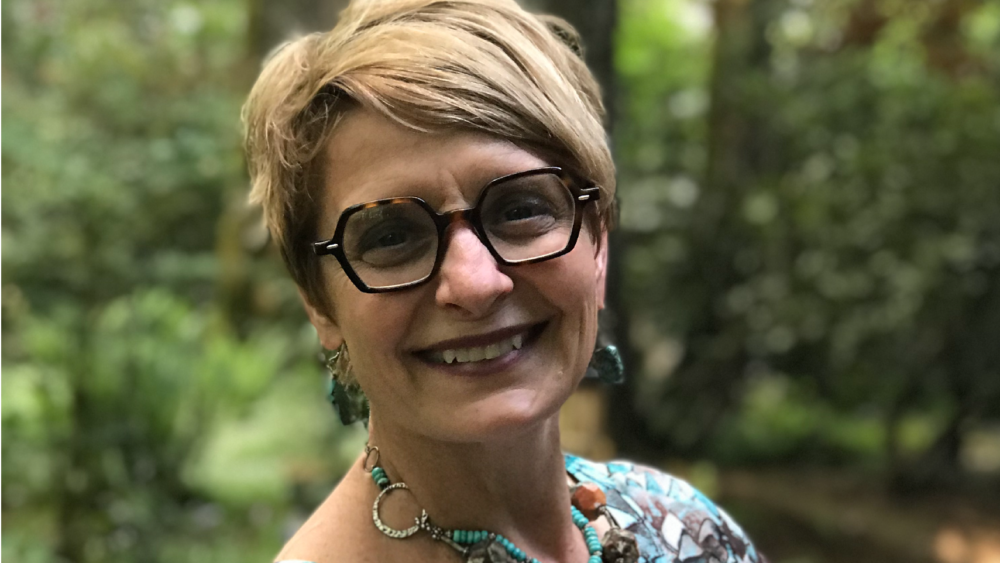IT’S OFFICIAL! Michelle Meyer is the Center’s 4th Executive Director. Michelle’s collaborative approach will be integral as we re-imagine how Maybelle Center can help shape a healthier Portland for all of us.
1. What do you think will be the biggest challenge you’ll face in the first 365 days as Executive Director (ED)?
“I think an important and key resource at a small organization like Maybelle Center is the people who work here. When a staff member leaves, it can really affect the organization. We’re rolling through a lot of transition right now. Many of our key staff have been here for less than a year — some that are brand new, including our new Development Director who was hired to backfill my position.
It’s really mission-critical work to invest in staff, reduce attrition, and to soften the bumps when it does occur. Our staff has strong relationships with members, with volunteers, and with each other, so employee transitions affect our entire community.
We need to improve employee tenure by taking deliberate steps to reduce burnout, to make sure everyone feels supported, and to encourage employee growth wherever we can. I want everyone to love working here as much as I do.
And when a staff member does inevitably decide to leave, we need a plan to buffer the transition, so remaining staff are not stretched too thin. That’s the culture-change we’re working towards.”
2. Burnout can be common in the non-profit sector. What’s been your secret to staying positive and focused?
“First, I constantly remind myself why I’m here. It’s not just a job, a transaction, a grant proposal, or a call I have to make. It’s so much bigger than that – it’s an extension of me. However, it’s not healthy if it takes over my life either.
I acknowledge that there’s always more work than can be done in a single day or week. I try to find a balance where I’m not digging in so deep or staying so many hours that I’m burning out.
I try to make time for self-care and my family. Because in reality, most of us give the best physical hours of our day to work and not to our family. When you get home at the end of the day, you’re tired, and you’re rushing around to get a meal on the table, or getting the kids to soccer practice or whatever.
I regularly ask myself, “Am I squishing my family in around the edges?” Or am I intentionally making time for them and being present?”
“I see the ED’s role as the ultimate bridge builder and connector. It certainly takes longer to engage stakeholders on the front-end, but you end up getting deeper understanding and greater commitment. I find there’s often more than one ‘right way’ to make a change.”
– Michelle Meyer
3. You mentioned “close relationships with folks you serve” as one of the things you love about Maybelle Center. How does your equity work inform these relationships?
“I see us working together to solve the problem. Our members are part of the answer to improving the circumstances in which we’re all living. And at the same time, we acknowledge that our members are the ones who are most affected.
We’re still trying to figure out what ‘working alongside each other’ looks like in practical terms. Our members are very thoughtful. They’re genuinely looking out for one another and genuinely caring about the staff and the volunteers.
I’m sure we’ll mess up a few times, but we know that working together is an integral part of the solution. I try to focus on that.”
4. Where do you see Maybelle Center in 5 or 10 years?
“We’ve come to the natural end of our last strategic plan. That means it’s time to write a new one. But I want to make sure we’re not rushing through it.
We’ve learned from our equity work that we get better outcomes if we’re intentional about the process – including considering who we’re engaging and how.
We want to listen to one another and have honest conversations around questions like:
- What kind of impact are we having right now? How do we measure it? How do we evaluate it going forward?
- How can we have the greatest impact in all areas including program delivery, fundraising and communications, finances, and our physical space?
- What would it look like if we fully integrate our racial equity work into what we do?
- How can we best invest our reserve funds?
- How can we increase service delivery and improve the internal workings of the organization by being thoughtful about our space utilization?
The results of this work (coined the ‘Impact Initiative’) will inform our strategic plan. Right now, I’m currently working with a consultant to develop a plan and timeline for engaging everyone in the process.”



Comments are closed.